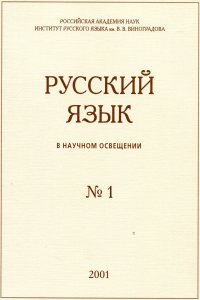Numeral phrases with the concordant attribute in the Middle Russian chronicles and notarial acts
Abstract:
This paper discusses the types of numeral phrases with the concordant attribute in the Russian chronicles and notarial acts of the late 14th–17th centuries. The material for the study was: Tipografskaya letopis (the late 14th — 15th cent.), Nikonovskaya letopis (16th cent.), Pskovskaya III letopis (16th cent.), Kholmogorskaya letopis (16th cent.), Dvinskoj letopisec (17th cent.), Akty Russkogo gosudarstva 1505–1526, Acts of socio-economic
history of North-Eastern Russia (the late 14th — early 16th cent.), Mozhajskie akty (17th cent.). It can be concluded that coordination of the attribute in the sing. fem. is used both in studied chronicles and notarial documents of the late 14th–17th centuries, but the sing. fem. forms are more common in non-bookish contexts. In numeral phrases with two, three, four, the nom. and acc. pl. forms are the most frequent; gen. pl. forms are common only in Kholmogorskaya letopis and Mozhajskie akty. The most frequent model of numeral phrases with the concordant attribute is «numeral+noun+ attribute». The earliest examples of the model «numeral+attribute+noun» date back to the 16th century.


